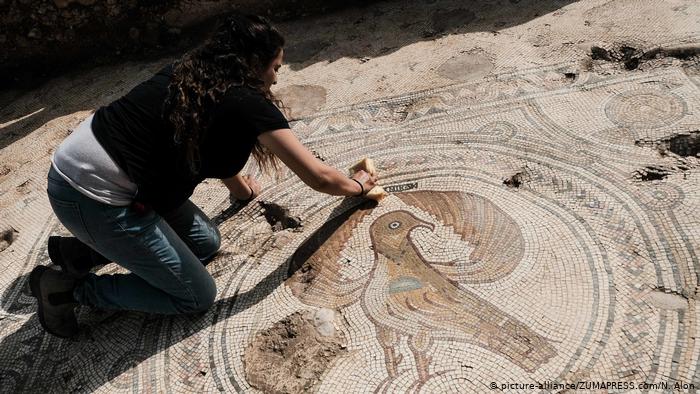Well-Preserved Byzantine Church Uncovered in Israel
The Church of the Byzantine Age was discovered by Israeli archeologists on Wednesday in a neighborhood west of Jerusalem.
The Israel Antiquities Authority showed some of the objects of the almost 1.500-year-old church after three years of excavations.
During this discovery, scientists found many sophisticated mosaics depicting birds, fruit and plants and vivid frescoes on the church walls.
The church was also elaborately designed, including a marble chancel and a calcite flowstone baptismal.
One floor mosaic contains an eagle, a symbol of the Byzantine Empire.
“We know of a few hundred churches in the Holy Land but this church by far surpasses most of them by its state of preservation and the imperial involvement which funded it,” said Benjamin Storchan, the excavation’s director.

Mystery martyr
An inscription in the courtyard says the site is dedicated to a “glorious martyr,” although researchers are still puzzling over their identity.
An underground crypt below the main area of the church is believed to have contained the martyr’s remains.
“The martyr’s identity is not known, but the exceptional opulence of the structure and its inscriptions indicate that this person was an important figure,” Storchan said.

Another inscription on the site revealed that Byzantine emperor Tiberius II Constantinus helped fund the church’s expansion.
Researchers believe the site was likely a popular destination for pilgrims until it was abandoned during the Muslim Abbasid caliphate in the 9th century AD.
Following the collapse of the Byzantine Empire, the entrances to the church were sealed with large stones.
Excavators were able to move the heavy stones, revealing glass lamps and a piece of the vault where the nameless martyr is believed to have been buried.
